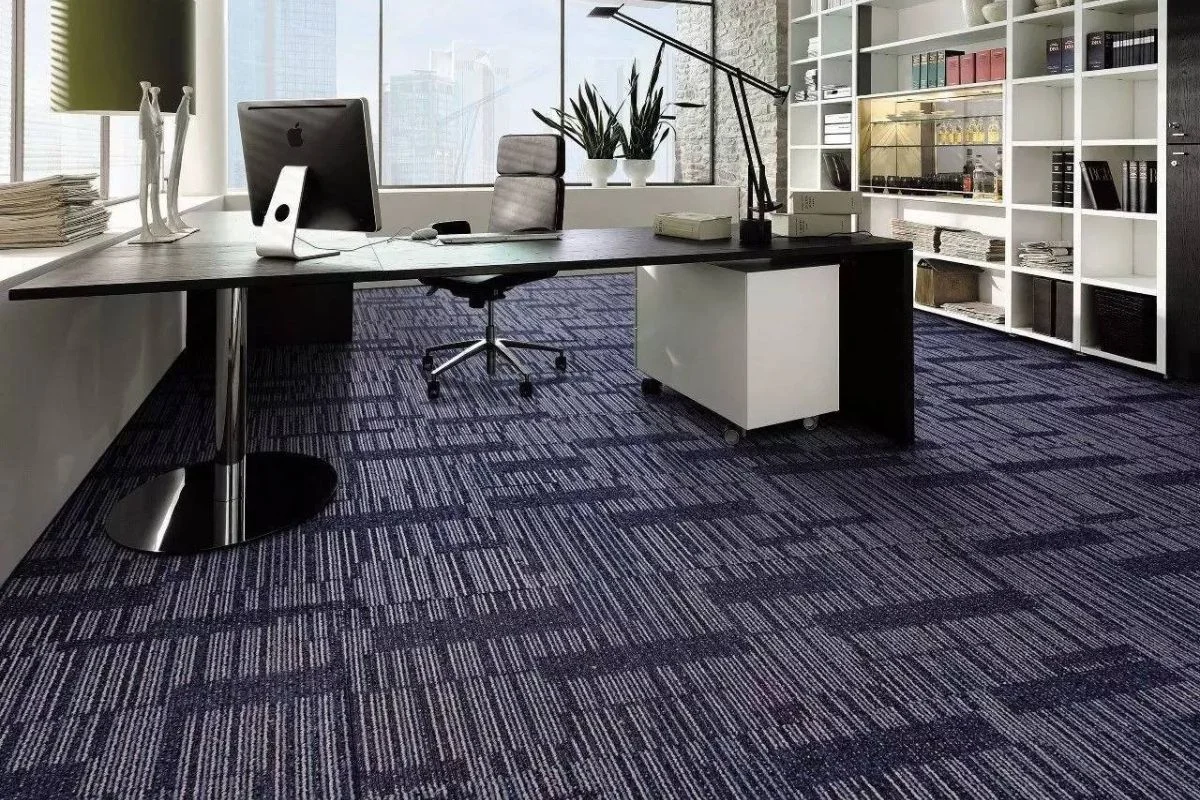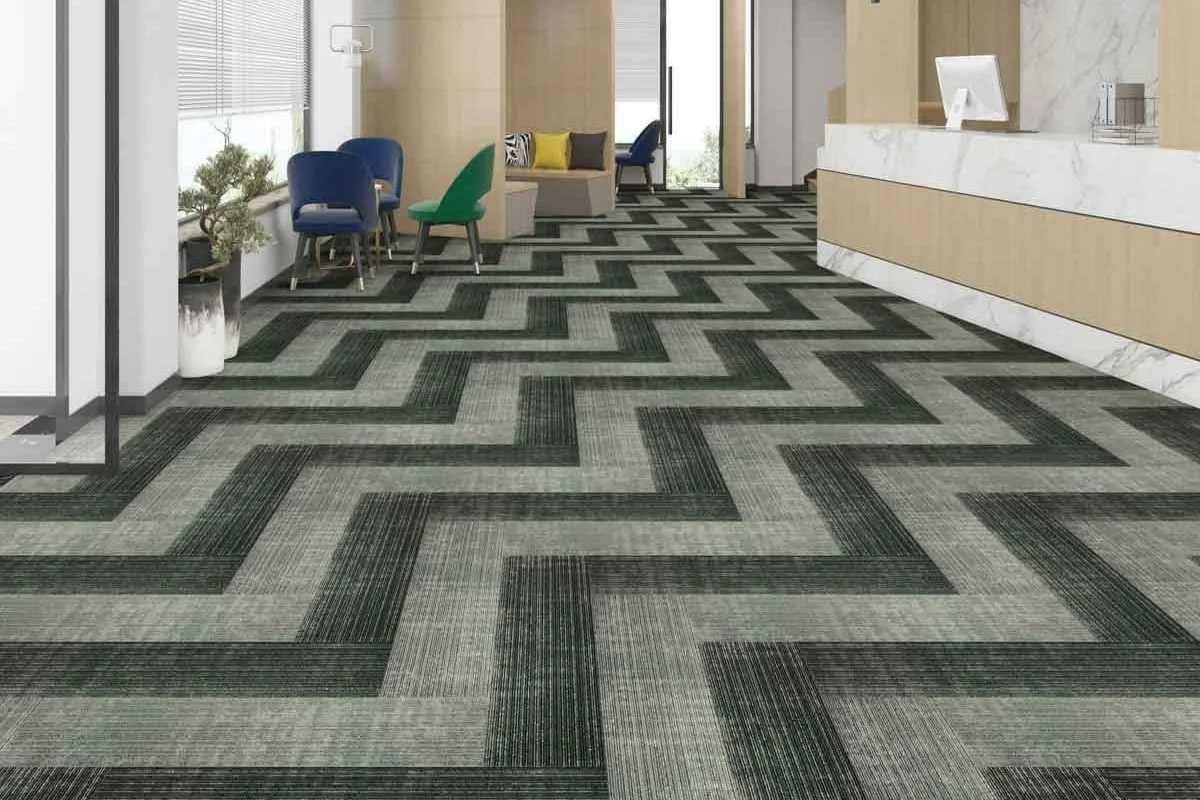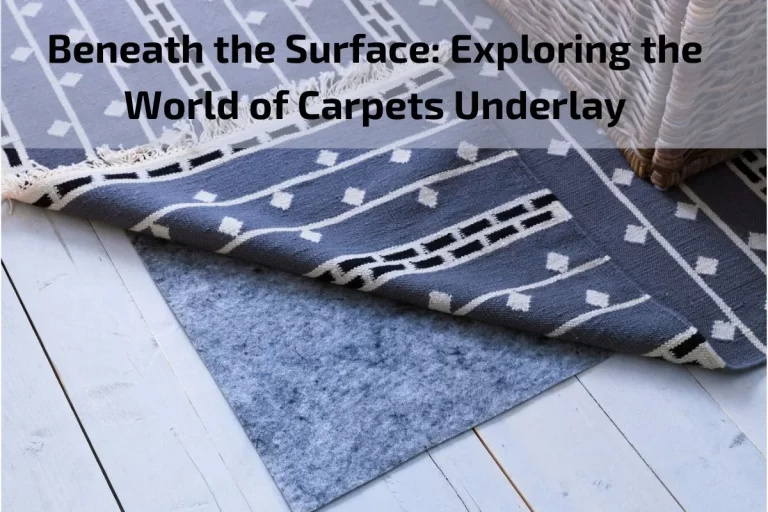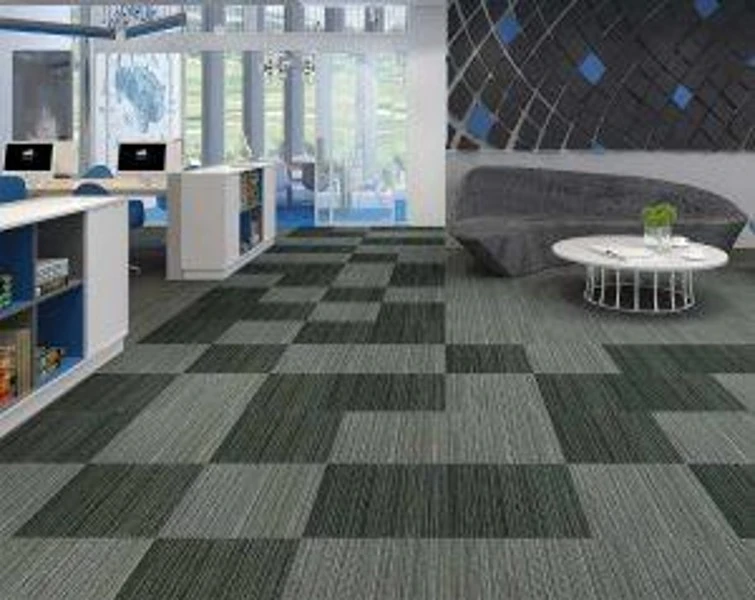In the fast-paced world of business, where every detail contributes to the overall success of a workspace, the choice of office carpet emerges as a pivotal decision with far-reaching implications. More than a mere floor covering, the right office carpet can significantly impact the aesthetics, functionality, and atmosphere of a workplace. “Choosing the Right Office Carpet: A Comprehensive Guide for Businesses” embarks on a journey to unravel the intricacies of selecting the ideal carpet for your office space. From design considerations to practical functionality, join us in exploring the essential elements that make the perfect office carpet a key player in fostering a productive and visually appealing work environment.
Importance of Office Carpet
The importance of office carpet extends far beyond its role as a mere floor covering. In the dynamic landscape of modern workplaces, where design and functionality intertwine, the choice of office carpeting holds significant implications for the overall ambiance and productivity of the workspace. Let’s delve into the key aspects that underscore the importance of office carpets:
Aesthetic Appeal:
Professional Image: The visual appeal of an office space contributes to the formation of a professional and welcoming atmosphere. Well-chosen office carpets enhance the overall aesthetic, creating a positive first impression for clients, visitors, and employees alike.
Brand Representation: The design and color scheme of office carpets can be aligned with the brand identity, reinforcing brand values and creating a cohesive visual representation.
Comfort and Well-being:
Ergonomic Benefits: Office carpets provide a comfortable surface for employees to walk and stand on throughout the day. This ergonomic advantage contributes to the overall well-being of employees by reducing fatigue and minimizing the impact on joints.
Noise Reduction: Carpets act as effective sound absorbers, reducing noise levels in bustling office environments. This is crucial for maintaining a quiet and focused atmosphere, enhancing concentration and productivity.
Workplace Productivity:
Increased Focus: Comfortable and aesthetically pleasing office carpets contribute to a positive work environment, fostering increased focus and concentration among employees.
Employee Morale: The overall design and ambiance, influenced by office carpeting, play a role in boosting employee morale and satisfaction, ultimately impacting productivity and retention rates.
Temperature Regulation:
Insulation Properties: Carpets provide an additional layer of insulation, helping to regulate room temperature. This is especially important in large office spaces where maintaining a comfortable working environment is essential.
Versatility and Customization:
Design Flexibility: The availability of various styles, colors, and patterns allows businesses to customize their office space. This flexibility ensures that office carpets can be tailored to suit the unique design preferences and functional needs of the workspace.
Safety Considerations:
Slip Resistance: Carpets inherently offer slip-resistant qualities, contributing to a safer working environment. This is particularly important in areas with high foot traffic or where spills are more likely to occur.
Long-Term Cost Savings:
Durability: Investing in high-quality office carpets can lead to long-term cost savings. Durable carpets, properly maintained, can withstand the wear and tear of daily use, reducing the frequency of replacements.
Benefits for Office Carpets
Office carpets bring a myriad of benefits to the workplace, beyond being a simple floor covering. These benefits encompass various aspects of the office environment, contributing to aesthetics, employee well-being, and overall functionality. Here are the key benefits of using office carpets:
Enhanced Aesthetics:
Professional Atmosphere: Office carpets contribute to the creation of a professional and polished atmosphere. They add a touch of sophistication and style to the workspace, making a positive impression on clients and visitors.
Comfort and Ergonomics:
Underfoot Comfort: The soft and cushioned surface of office carpets enhances underfoot comfort, providing employees with a more pleasant experience while walking or standing for extended periods.
Reduced Fatigue: Ergonomically designed carpets help reduce fatigue and stress on joints, contributing to the overall well-being of employees.
Noise Reduction:
Sound Absorption: Carpets act as effective sound absorbers, reducing noise levels in open office layouts. This is essential for maintaining a quiet and focused environment, minimizing distractions and improving overall productivity.
Temperature Regulation:
Insulation Properties: Carpets provide an additional layer of insulation, helping to regulate room temperature. This is especially beneficial in larger office spaces where temperature control is important for employee comfort.
Customization and Branding:
Design Flexibility: Office carpets come in a wide range of styles, colors, and patterns, offering design flexibility. This allows businesses to customize their workspace to align with brand aesthetics and create a cohesive visual identity.
Branding Opportunities: Customized carpets can feature company logos or specific brand colors, reinforcing brand identity and creating a branded environment.
Increased Safety:
Slip Resistance: Carpets inherently provide slip resistance, contributing to a safer workplace. This is particularly important in areas with high foot traffic or where the risk of spills is elevated.
Improved Workplace Productivity:
Positive Atmosphere: A well-designed and comfortable workspace positively influences the overall atmosphere, contributing to increased employee satisfaction and productivity.
Reduced Stress: The comfort provided by office carpets helps reduce stress and contributes to a more relaxed working environment.
Durability and Longevity:
Wear Resistance: High-quality office carpets are designed to withstand the wear and tear of daily use. This durability ensures a longer lifespan for the flooring, reducing the need for frequent replacements and associated costs.
Installation Tip for Office Carpet
Efficient and proper installation is crucial for maximizing the benefits of office carpets. Here are some essential tips for the installation of office carpets:
Professional Installation:
Hire Experienced Installers: Engage professional carpet installers with experience in commercial settings. Their expertise ensures a seamless and professional installation, minimizing the risk of errors.
Subfloor Preparation:
Ensure a Smooth Surface: Thoroughly inspect and prepare the subfloor before installation. It should be clean, dry, and free from any irregularities. Smoothing out the subfloor ensures a stable foundation for the carpet.
Acclimatization:
Allow for Acclimatization: Before installation, allow the carpet to acclimate to the office environment for at least 24 hours. This helps the carpet adjust to the temperature and humidity of the space.
Quality Underlay:
Choose Appropriate Underlay: Invest in high-quality underlay suitable for commercial applications. The underlay enhances the carpet’s comfort, durability, and insulation properties.
Seam Placement:
Strategic Seam Placement: Plan the placement of seams strategically to minimize visibility. Professional installers will carefully position seams based on the carpet’s pattern and the office layout.
Power Stretching:
Utilize Power Stretching: Ensure that the carpet is properly stretched during installation using power stretching tools. This prevents wrinkles, buckling, or premature wear, contributing to a longer-lasting installation.
Directional Considerations:
Consider Pile Direction: Pay attention to the direction of the carpet pile during installation. Installing all carpet tiles or rolls in the same direction creates a uniform appearance and enhances the overall aesthetic.
Adhesive Application:
Follow Manufacturer Guidelines: If using adhesive, strictly adhere to the manufacturer’s guidelines. Apply the adhesive evenly, and ensure that it is compatible with both the carpet and subfloor materials.
Seam Sealing:
Proper Seam Sealing: In areas where seams are necessary, ensure proper seam sealing. This prevents fraying and enhances the overall durability of the carpet.
Regular Maintenance Considerations:
Plan for Accessibility: Consider future maintenance needs during installation. Accessibility to subfloor areas, such as electrical and data outlets, should be maintained for any future office renovations or changes.
Maintenance Tips Office Carpet
Maintaining office carpets is essential for preserving their appearance, extending their lifespan, and ensuring a clean and healthy work environment. Here are some practical maintenance tips for office carpets:
Regular Vacuuming:
Establish a Routine: Implement a regular vacuuming schedule, ideally two to three times a week, to remove dirt, dust, and debris. High-traffic areas may require more frequent vacuuming.
Spot Cleaning:
Address Stains Promptly: Attend to spills and stains promptly to prevent them from setting. Use a mild carpet cleaner or spot remover recommended for commercial carpets. Blot the stain instead of rubbing to avoid spreading.
Entrance Mats:
Use Entrance Mats: Place entrance mats at office entrances to capture dirt and moisture from shoes. This helps prevent outside contaminants from reaching the carpeted areas.
Regular Professional Cleaning:
Schedule Professional Cleanings: Arrange for professional carpet cleaning services on a regular basis. This deep cleaning helps remove embedded dirt and allergens, maintaining a healthy indoor environment.
Invest in Quality Underlay:
Choose Quality Underlay: Quality underlay not only enhances comfort but also protects the carpet. Ensure that the underlay is in good condition and replace it if needed.
Furniture Pads:
Use Furniture Pads: Place furniture pads under the legs of desks, chairs, and other heavy furniture to prevent indentations and wear on the carpet.
Implement a No-Shoe Policy:
Encourage a No-Shoe Policy: Encourage employees and visitors to remove outdoor shoes when entering carpeted areas. This reduces the introduction of dirt and contaminants.
Regular Inspections:
Conduct Routine Inspections: Regularly inspect the carpet for any signs of wear, damage, or loose fibers. Addressing issues promptly can prevent them from worsening.
Manage Moisture:
Address Moisture Issues: Address any sources of moisture promptly to prevent mold or mildew growth. Ensure that areas prone to spills or water exposure are adequately protected.
Rotate Furniture:
Rotate Furniture: Periodically rotate furniture to distribute wear evenly across the carpet. This prevents specific areas from showing more wear than others.
Employee Training:
Educate Employees: Provide guidelines to employees on carpet care. This may include instructions on handling spills, avoiding dragging heavy items, and other practices that contribute to carpet longevity.
Consider Carpet Tiles:
Opt for Modular Carpet Tiles: If possible, consider using modular carpet tiles. These are easier to replace in case of damage or stains, providing a cost-effective solution for long-term maintenance.
Address Allergens:
Use Allergen-Reducing Products: Consider using carpet products designed to reduce allergens, especially in environments where indoor air quality is a concern.
Update Cleaning Equipment:
Modernize Cleaning Equipment: Ensure that vacuum cleaners and other cleaning equipment are in good condition. Upgrading to modern, efficient equipment can improve cleaning effectiveness.
Professional Inspections:
Schedule Professional Inspections: Periodically schedule professional inspections of the entire carpeted area. Professionals can identify potential issues and recommend appropriate maintenance measures.
conclusion
In conclusion, the importance of proper maintenance for office carpets cannot be overstated. A well-maintained carpet not only enhances the aesthetic appeal of the workspace but also contributes to a healthier and more comfortable environment for employees and visitors alike. By following the outlined maintenance tips, businesses can extend the lifespan of their office carpets, reduce the risk of allergens, and create a professional atmosphere.











